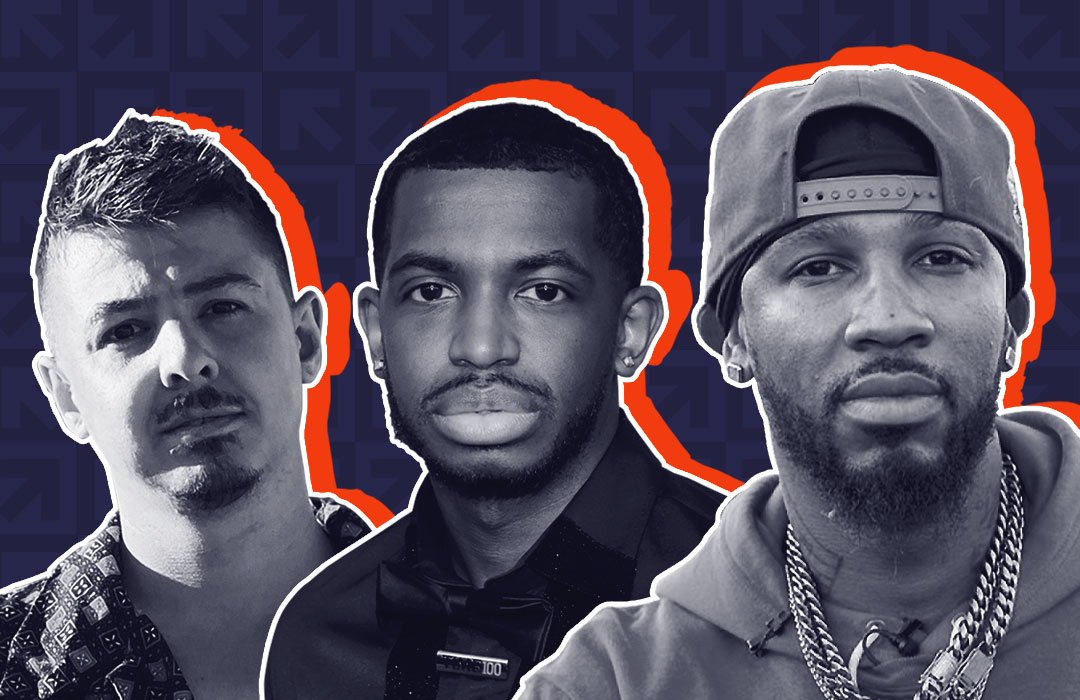Right after the first-ever Amazon warehouse voted to unionize in April, executives saw red.
A bright red Amazon Labor Union hoodie, that is. A red fitted baseball cap, too. And matching red sweats.
It’s what Chris Smalls, president of the ALU, wore as he walked out of the National Labor Relations Board office on Staten Island, New York, after the votes were tallied. Surrounded by journalists and cheering Amazon employees, he then popped a bottle of Champagne to celebrate the historic win — and documented it on Instagram, of course.
“We’re making unionizing cool,” Smalls tells Money. “That's what I think the labor movement has always been missing: It's not cool.”
If 2022 is any indication, trends are certainly starting to shift. After decades of lackluster support, unions are now cropping up at a robust range of companies, including Amazon, Apple, Starbucks and Trader Joe’s. The general public is getting back on board, too: This year, the share of Americans who approve of labor unions soared to 71% — the highest level since 1965, according to Gallup.
Much of this recent momentum is thanks to the efforts of the ALU and Starbucks Workers United, who have played a crucial role in re-energizing the labor movement.
Take Smalls, for instance. Aside from the monumental labor win in April at JFK8 — the Staten Island warehouse — 34-year-old Smalls is known for donning union drip no matter the occasion. His all-red outfit is just one of several examples. Pundits love to criticize his clothing, but younger workers, particularly those in Gen Z, go wild for it.
Smalls hopes just maybe they’ll go wild for unionizing, too.
“If I was to run for president, I would look just like this,” Smalls told the New York Times shortly after his union victory. “I’d walk in the White House with a pair of Jordans on because this is who I am as a person.”
Less than a month later, he made good on that promise. He was invited to the White House along with a cadre of other organizers — including Laura Garza of Starbucks Workers United — and got to speak directly with President Joe Biden. During the meeting, Smalls was decked out in a black Yankees cap and a multi-colored bomber jacket that said “Eat the Rich.”
And, yes, he confirms to Money, he wore his Jordan 11s.
Before Smalls’ efforts to make unionizing fashionable, a separate labor showdown brewed elsewhere in the Empire State.
Last fall, baristas at several Starbucks locations in and around Buffalo were gearing up to unionize for the first time, says Sam Amato, an organizer with Starbucks Workers United. Organizers were drumming up support on the ground to secure signatures from at least 30% of local Starbucks workers — the threshold needed to spark a vote with the National Labor Relations Board, a step in getting an employer to bargain over employment terms and conditions.
Like most front-line workers who didn’t have the luxury of taking their work home with them, the pandemic was wearing on Amato and his colleagues.
“We were busier than ever, we were burnt out, we were stressed out,” says 35-year-old Amato, who’s immunocompromised. “And on top of that, we're worried about getting a disease that could potentially kill us.”
Then, in December 2021, Starbucks baristas made history: The first U.S. storefront voted to unionize. Several other locations near Buffalo, including Amato’s store in Tonawanda, quickly followed suit.
It was a watershed moment. For decades, union membership has been steadily declining. Department of Labor data shows that between 1991 and 2021, union membership fell from 16% to 10.3%. But that figure includes public-sector workers, which have disproportionately higher union membership rates. If you isolate the private sector, only 6.1% of workers were unionized in 2021.
Better pay, improved benefits and a safer work environment are chief among the concerns for the Amazon and Starbucks organizers. Even though Amato — who no longer works for Starbucks — admits that the coffee chain provides decent pay, he says his supervisor-level wages still weren’t enough.
“At the end of the day,” he says, “I still could barely afford rent. I have a pile of medical bills that I can't afford, even though I had health insurance through Starbucks. I could barely afford gas and groceries.”
The recent wins for Starbucks Workers United and the ALU are the first steps toward getting those demands met. At the very least, the wins have catapulted unions back into the mainstream. Starbucks workers have particularly capitalized on the momentum: To date, 260 Starbucks branches have unionized with Starbucks Workers United, which is a part of the broader Philadelphia-based Workers United labor union.
Over at Amazon, however, the notoriety has yet to translate into more union victories.
Smalls indeed pulled off one of the most impressive David-versus-Goliath labor wins in decades, all with a scrappy, worker-led union he started with 33-year-old Derrick Palmer, ALU’s vice president. (Smalls no longer works for Amazon; Palmer has been suspended.)
Because the ALU is an independent union, it doesn’t have a larger organization to lean on for funding and resources like Starbucks Workers United does. They’re having difficulty scaling up their operations and have faced several setbacks since April, including an unsuccessful vote at a warehouse right across the street from JFK8. And Smalls and Palmer can only attend so many rallies at once.
For now, they’re hammering out a union contract for the JFK8 workers and plan to put pressure on Amazon by sparking unions at other warehouses. Whether it’s by wearing viral union drip gear or whipping up crowds to protest Amazon, they’re determined to keep labor cool and in the headlines.
“We have a lot of work to do,” Palmer says. “I’m just proud to be in this position to motivate workers to unionize and make sure the labor movement is in a good spot.”






